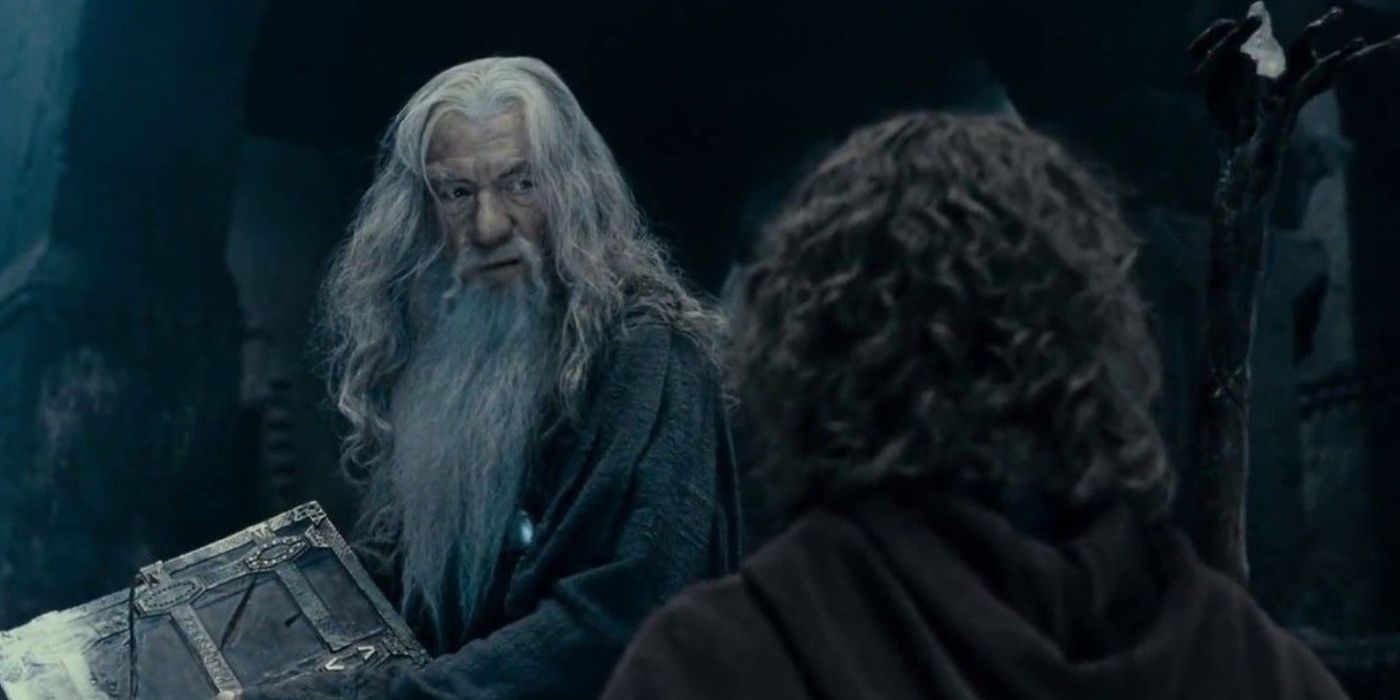The Big Picture
- Middle-earth’s Glorfindel has unique powers due to Tolkien’s world-building consistency.
- J.R.R. Tolkien navigated a continuity error with two Glorfindels by merging them into one with significant power.
- Glorfindel’s character inconsistency was resolved creatively with a legendary backstory.
J.R.R. Tolkien‘s Lord of the Rings’ books have been adapted several times, telling the much-loved story in different formats. But Tolkien’s lore goes far beyond what can be included on screen, even in the divisive prequel series, The Lord of the Rings: The Rings of Power on Prime Video. With his extensive world-building, it should be no surprise that Tolkien was detailed to a fault. Even the story’s most-cited “plot holes” have an airtight excuse if you look at Tolkien’s texts, but he is not flawless. One error in continuity left Tolkien to come up with a creative explanation by giving one minor character a significant amount of power, though movie watchers may never realize it.
In Middle-earth, all elves are near immortal, but Glofindel has additional powers. The best-known version, Peter Jackson‘s Lord of the Rings film trilogy, cut Glorfindel’s character even though his story is even more legendary than Legolas (Orlando Bloom), Elrond (Hugo Weaving), or any of the more familiar Elves. After dying in the First Age, Glorfindel is revived to interact with the Fellowship, but this incredible story was not Tolkien’s original intent. Instead, the author came up with a reason to connect two different elves named Glorfindel to avoid inconsistencies in his world, showing his dedication and perfectionism.
The Lord of the Rings: The Fellowship of the Ring
A meek Hobbit from the Shire and eight companions set out on a journey to destroy the powerful One Ring and save Middle-earth from the Dark Lord Sauron.
- Release Date
- December 19, 2001
- Runtime
- 178 minutes
Who Is Glorfindel in ‘Lord of the Rings’?
Chronologically, the character is introduced in The Silmarillion, where he is the hero of the Elven Kingdom of Gondolin. As the city is attacked by the forces of Morgoth, the inhabitants face destruction. But as they flee, Glorfidel fights and slays the Balrog that chased them. In the epic battle, Glorfindel pierced the creature’s belly, sending it down the cliff, but the Balrog had a hold on Glorfindel, taking the hero with him. Given that this takes place thousands of years before the events of The Lord of the Rings, it should have prevented his reappearance, no matter how long elves can live.
However, he shows up in the first book of the series, living in Rivendell. Glorfindel is the first elf the hobbits encounter, as he finds them on the road, protecting them from the Nazgûl and helping them reach Rivendell, a role Arwen (Liv Tyler) fulfills in the films. Glorfindel is even considered to join the Fellowship, but the Council of Elrond decided his skillset was not suited to the secret mission they were planning.
The Two Glorfindels Created a Continuity Issue for ‘Lord of the Rings’
Though The Lord of the Rings was published first, Tolkien wrote The Silmarillion before his better-known book, seemingly reusing the name that no one besides himself had seen. Yet, that didn’t sit right with Tolkien. He wrote two essays discussing the inconsistency. His son, Christopher Tolkien, later addressed his father’s thoughts on the subject in the twelve-volume series The History of Middle-earth books, which compiled and analyzed his father’s materials. The final volume, The Peoples of Middle-earth, reveals that these were originally two different elves named Glorfindel, but the issue bothered Tolkien.

Related
This Is Why Russell Crowe Turned Down ‘The Lord of the Rings’
“I very much felt the studio were making that decision, not the film director.”
He claimed that the Glorfindel in The Lord of the Rings was a “somewhat random use of the names found in older legends, now referred to as The Silmarillion, which escaped reconsideration in the final published form of The Lord of the Rings.” Tolkien himself could not live with the error, nor did he simply rename Glorfindel of Gondolin for his own very specific reasons. No other elves share a name, so having two Glorfindels did not seem to be a valid option to Tolkien. Citing the linguistics and the fact that the text of The Fellowship of the Ring refers to Glorfindel of Rivendell as one of the lords of the Eldar, Tolkien combined them into one person. Yet, with Glorfindel’s heroic death, the change interfered with his own desire for consistency.
J.R.R. Tolkien Wrote Out a Creative Solution
Instead of accepting defeat, Tolkien created a solution he could live with by explaining that Glorfindel of Rivendell is the re-embodied Glorfidnel of Gondolin. Because of his heroism, his soul was allowed to dwell in Valar until Manwë, the King of the Valar, sent him back to Middle-earth as an emissary with additional powers similar to that of the Istari. That is what gives him the ability to predict that “no man” will kill the Witch-king of Angmar. Glorfindel is not just an ancient and legendary hero, but he has more power than any other elf in Middle-earth, all thanks to Tolkien’s particular demand for continuity. This story may be a complex way to correct the error, but it accounts for Glorfindel’s death and his role in The Lord of the Rings, satisfying Tolkien. His dedication to consistency is part of what makes Tolkien’s world so impressive, and in this case, it created a fascinating backstory for the admittedly minor character.
The Lord of the Rings trilogy is currently available to stream on Max in the U.S.
WATCH ON MAX





